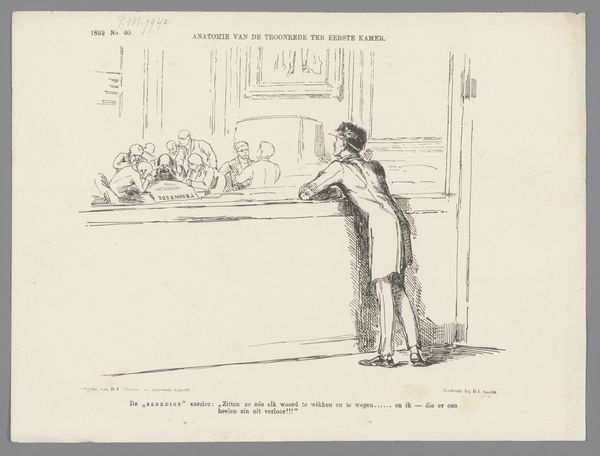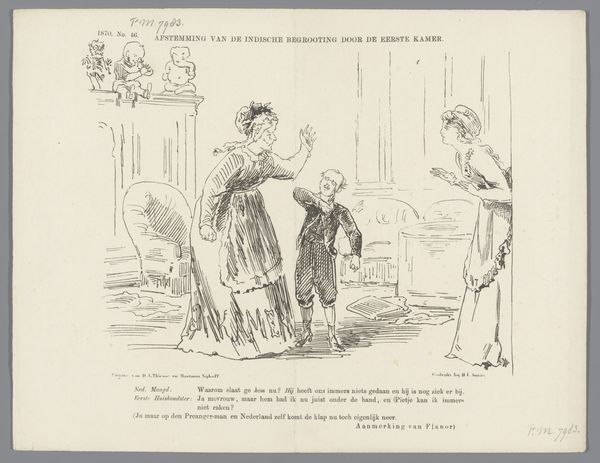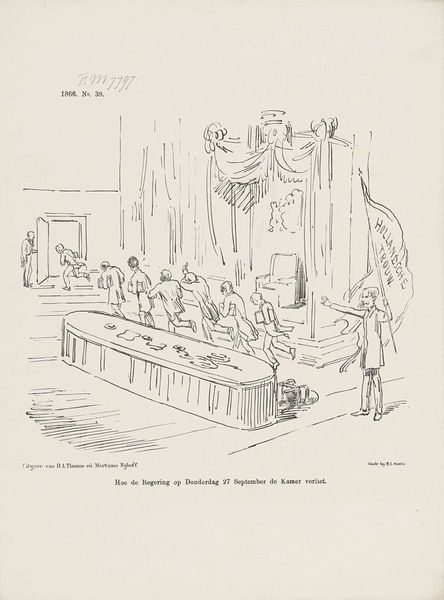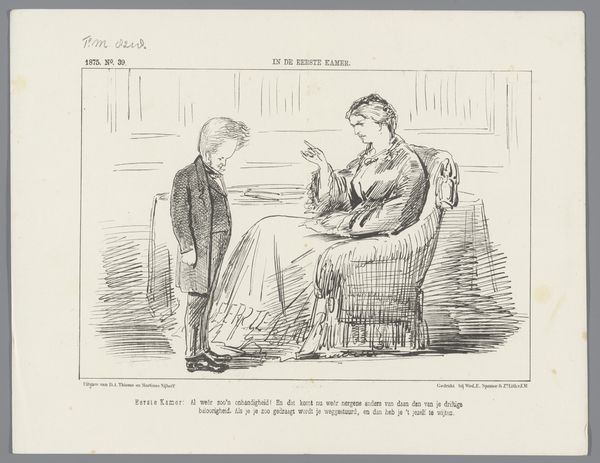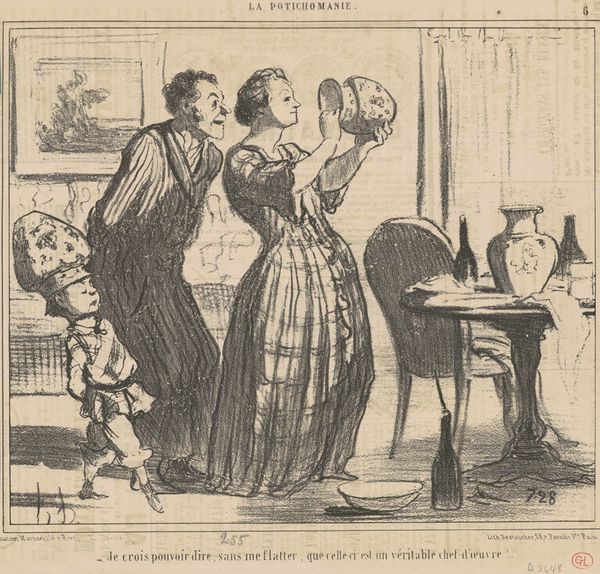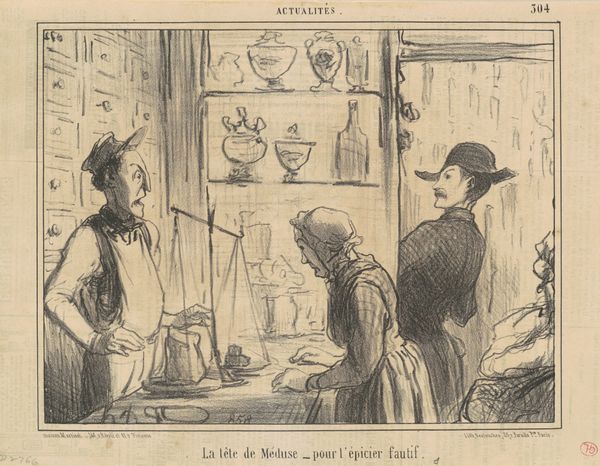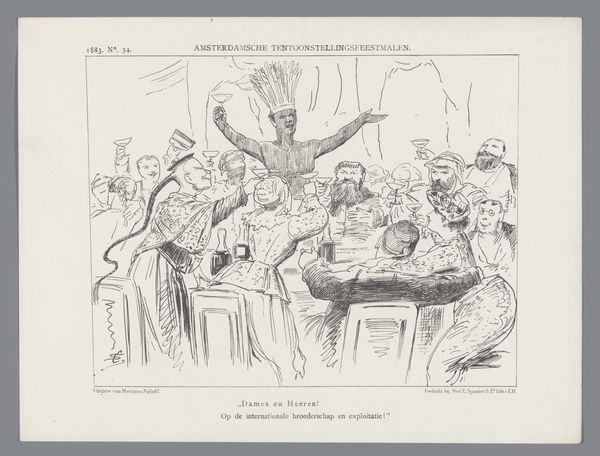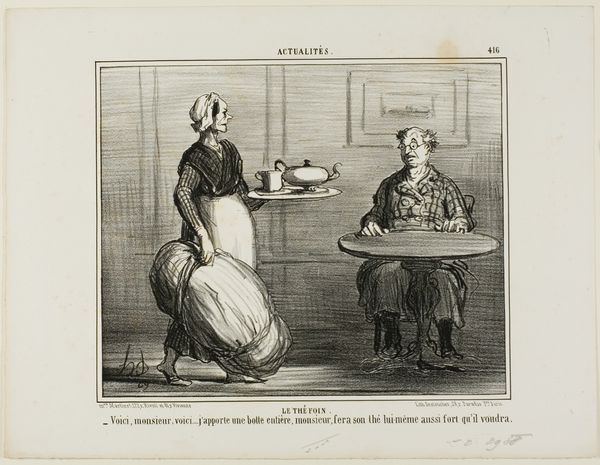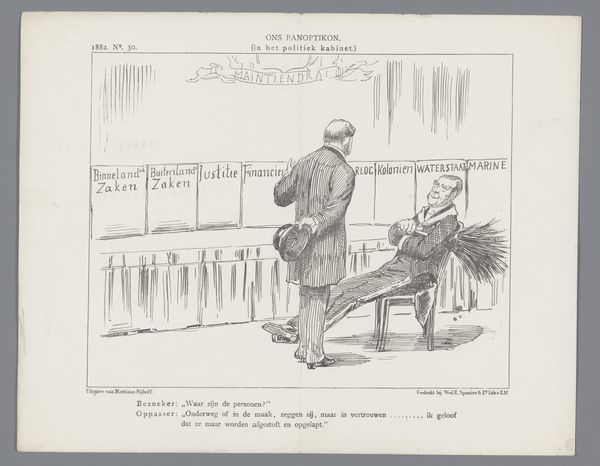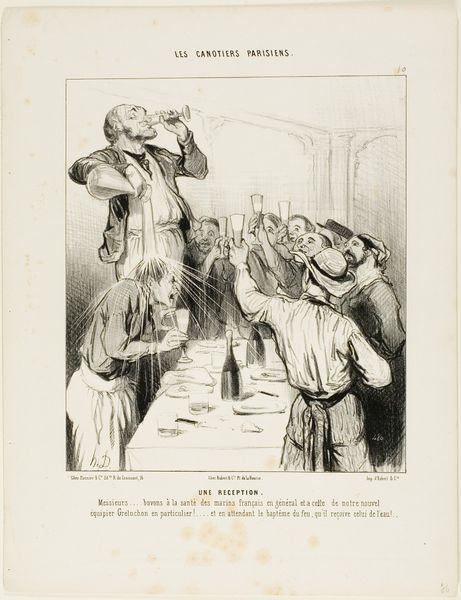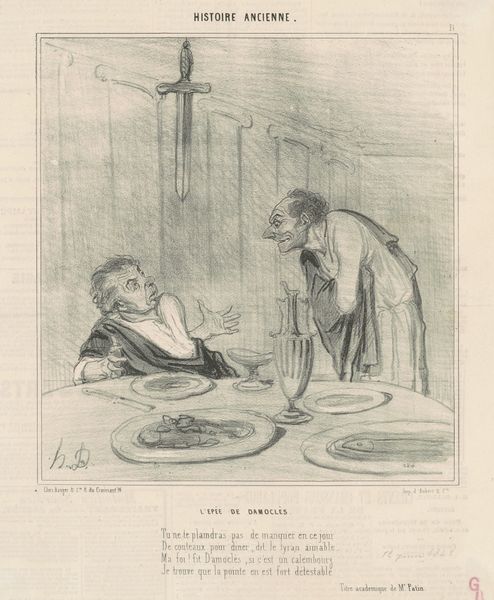
Spotprent op de onenigheid tussen gouverneur-generaal Sloet van de Beele en zijn opvolger Mijer, 1866 1866
0:00
0:00
lithograph, print
#
narrative-art
#
dutch-golden-age
#
lithograph
# print
#
caricature
#
line
#
history-painting
#
realism
Dimensions: height 215 mm, width 275 mm
Copyright: Rijks Museum: Open Domain
Curator: This lithograph from 1866, attributed to Johan Michael Schmidt Crans, is titled "Spotprent op de onenigheid tussen gouverneur-generaal Sloet van de Beele en zijn opvolger Mijer"—a cartoon about the disagreement between Governor-General Sloet van de Beele and his successor, Mijer. It’s quite detailed for a print, made of lines. Editor: My immediate impression is one of awkwardness. The scene depicts a long, empty table with two figures isolated at either end, newspapers raised like shields. There's a sense of tension hanging in the air. What can you tell me about this table that takes up so much visual real estate? Curator: Well, the lithograph would have been produced using a stone matrix. The method is relatively inexpensive and suited to mass distribution, pointing to a broad audience that could both read and access this commentary on Dutch colonial politics. As for the table itself, that's more symbolic than literally depicting its substance. Think of it more as representing… process. The machinery of the colonial state is here. Editor: And it's fascinating that you use that imagery—machines that facilitate the movement of bodies across political and social landscapes, given the long table acts as a separator. Its emptiness underscores a stark void in communication. Note the almost ritualistic placement of settings – they look staged rather than awaiting a meal, right? And these papers these men hold up -- each of them could symbolize a narrative of its own. Are they a barrier or the point of connection? Curator: Indeed. The lithographic technique allowed for the easy reproduction of textual elements, too—critical for the inclusion of satirical captions and speech bubbles that contribute to the cartoon’s narrative. Those texts become embedded within the print's materiality itself, a part of its very making, amplifying the commentary for popular consumption. The labor of disseminating the idea is materialized in the medium itself. Editor: Speaking of amplifying, notice that even Cairo is presented as a distant symbol on a placard -- detached, almost bureaucratic. This piece is heavy with implied narrative, even down to the Dragoman's posture. There is symbolism at every stage. Curator: A lot to unpack, then! The printing method reveals how messages were intended to reach a wider populace to challenge high authority at the time. Editor: Absolutely, and by reading those messages between the lines we come to see the piece's continuing emotional, and maybe even spiritual, truth.
Comments
No comments
Be the first to comment and join the conversation on the ultimate creative platform.
